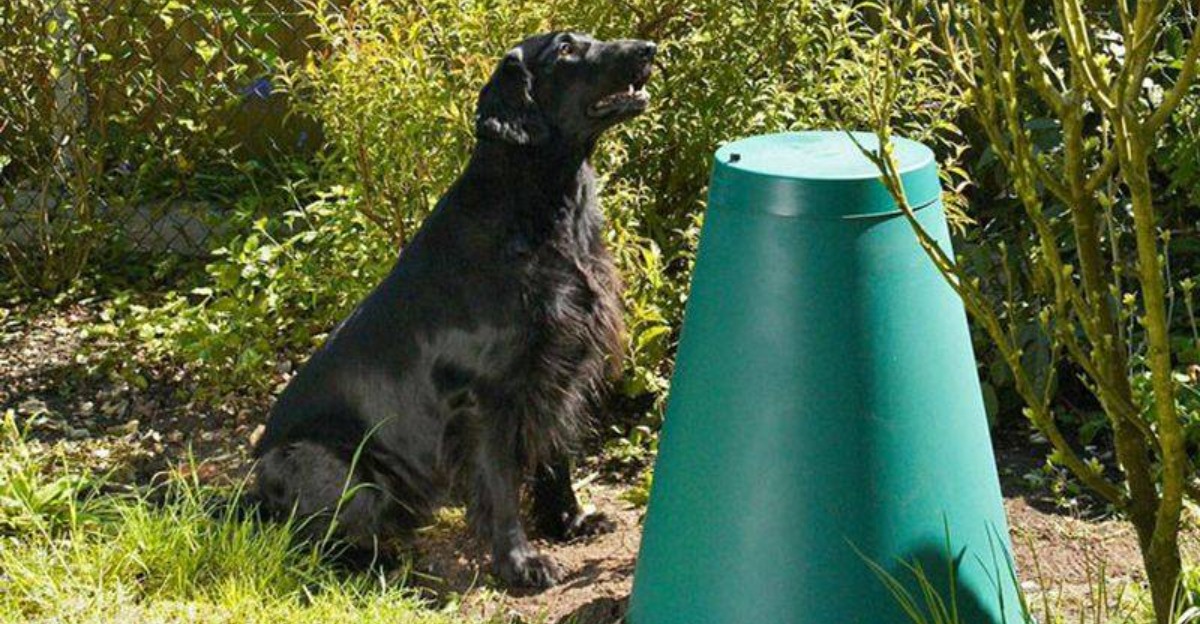
Nutrition for Exotic Pets: Rabbits, Birds, and More.
Feeding exotic pets like rabbits, birds, reptiles, and small mammals requires more than generic advice. Each species has unique dietary needs that, when met properly, can prevent disease and ensure long, healthy lives. This article explores essential nutrition guidelines for exotic companions, helping pet owners make informed, species-specific dietary choices to promote well-being and vitality in their animals.
🐶 Pet Star
47 min read · 7, Jul 2025

Introduction
Exotic pets are gaining popularity worldwide due to their fascinating behavior, unique appearances, and engaging personalities. These animals—ranging from rabbits and birds to reptiles and small mammals—require specialized care, with nutrition playing a central role in their overall well-being. However, unlike dogs and cats, exotic pets have diverse and often complex dietary requirements. Inappropriate feeding practices can lead to malnutrition, digestive issues, and serious health complications. This article explores the nutritional needs of common exotic pets, focusing primarily on rabbits, birds, reptiles, and small mammals like ferrets and guinea pigs, while offering practical guidelines for pet owners to ensure optimal health through proper diet.
1. Nutrition for Rabbits
Herbivorous Hindgut Fermenters
Rabbits are strict herbivores, and their digestive systems are designed for a high-fiber, low-fat, and low-sugar diet. As hindgut fermenters, rabbits rely on fiber not only to maintain proper gut motility but also to support healthy gut flora.
Key Components of a Rabbit’s Diet:
- Hay (70-80% of diet): Timothy hay, orchard grass, and meadow hay should form the bulk of a rabbit’s diet. Hay promotes dental health and provides essential fiber.
- Fresh Vegetables (10-15%): Leafy greens like romaine lettuce, cilantro, basil, and parsley are excellent. Avoid iceberg lettuce and high-oxalate greens in large amounts.
- Pellets (5-10%): Choose high-fiber pellets specifically formulated for rabbits. Avoid mixes with seeds, nuts, or dried fruit.
- Fresh Water: Should be available at all times.
- Treats (Minimal): Small pieces of apple or banana occasionally; avoid sugary treats.
Common Nutritional Issues:
- Obesity from excessive pellets or treats
- Dental disease from insufficient hay
- GI stasis (gut slowdown) from lack of fiber
2. Nutrition for Birds
Wide Dietary Variation Based on Species
Birds, depending on the species, can be herbivores, frugivores, omnivores, or even nectarivores. The complexity of avian nutrition makes it critical to provide species-appropriate diets.
General Guidelines for Pet Birds (e.g., parrots, parakeets, cockatiels):
- Pellets (50-60%): Nutritionally complete pellets are ideal. Avoid seed-only diets, which are high in fat and deficient in essential vitamins and minerals.
- Fresh Fruits and Vegetables (20-30%): Leafy greens, carrots, squash, apples (seedless), and berries are beneficial.
- Grains and Legumes (10-20%): Cooked brown rice, quinoa, oats, lentils, and beans.
- Protein Sources (Species-specific): Boiled eggs, tofu, or cooked chicken for omnivorous birds.
- Avoid Toxic Foods: Chocolate, avocado, onion, garlic, caffeine, and alcohol.
Common Nutritional Issues in Birds:
- Vitamin A deficiency (common in seed-fed birds)
- Obesity and fatty liver
- Calcium deficiency in laying hens or African greys
3. Nutrition for Reptiles
Ectothermic Animals with Highly Specific Diets
Reptiles encompass a wide range of species including turtles, tortoises, snakes, and lizards. Their nutritional needs vary based on whether they are herbivores, insectivores, carnivores, or omnivores.
Herbivorous Reptiles (e.g., Iguanas, Tortoises):
- Dark Leafy Greens (Main Diet): Collard greens, dandelion greens, mustard greens.
- Vegetables and Fruits: Squash, bell peppers, limited fruits.
- Calcium Supplementation: Dust food with calcium and vitamin D3 powder to prevent metabolic bone disease.
- Avoid: Iceberg lettuce, spinach (high in oxalates), and high-protein foods.
Insectivorous and Carnivorous Reptiles (e.g., Geckos, Bearded Dragons, Snakes):
- Insects: Crickets, mealworms, dubia roaches—gut-loaded and dusted with calcium.
- Rodents: Frozen-thawed mice or rats for snakes.
- Occasional Vegetables: For omnivorous species.
- Water: Must always be accessible.
Common Nutritional Issues in Reptiles:
- Metabolic bone disease from calcium deficiency
- Dehydration
- Vitamin A or D3 imbalances
4. Nutrition for Small Mammals (Ferrets, Guinea Pigs, Hamsters)
Each Small Mammal Has Unique Needs
Ferrets (Obligate Carnivores):
- High-Protein Diet: Raw or cooked meat, commercial ferret food, and high-quality cat food (grain-free).
- Avoid: Fruits, vegetables, and carbohydrates—ferrets cannot digest fiber.
- Water: Essential, should be fresh and clean daily.
Guinea Pigs (Herbivores):
- Hay (Primary): Timothy hay for fiber and dental health.
- Fresh Vegetables: Leafy greens, bell peppers, carrots.
- Vitamin C Supplementation: Guinea pigs cannot synthesize their own vitamin C—ensure pellets are fortified, or provide fresh vitamin C-rich veggies like bell peppers or supplement drops.
- Pellets: Fortified guinea pig pellets (no seeds/mix-ins).
- Avoid: Iceberg lettuce, potatoes, rhubarb.
Hamsters, Gerbils, and Mice (Omnivores):
- Pellets and Seed Mixes: As a staple, with fresh fruit and veg in small amounts.
- Protein Sources: Mealworms, boiled eggs, or cooked chicken.
- Occasional Treats: Apple, carrot, oats.
- Avoid: Sugary treats, onions, chocolate.
Common Issues in Small Mammals:
- Vitamin C deficiency (in guinea pigs)
- Obesity from sugary treats
- Dental problems due to lack of gnawing opportunities
Feeding Best Practices for Exotic Pets
- Species-Specific Diet: Always research or consult a vet before introducing a new food.
- Fresh and Clean: Ensure all food and water are fresh, and bowls are cleaned daily.
- Avoid Human Foods: Many common human snacks and processed foods are toxic to exotic pets.
- Regular Vet Visits: Especially important to monitor nutritional health.
- Monitor Weight and Behavior: Sudden changes may indicate dietary issues.
Exotic pets such as rabbits, birds, reptiles, ferrets, guinea pigs, and hamsters are captivating companions with unique dietary needs that differ significantly from traditional pets like dogs and cats, and understanding these requirements is crucial for ensuring their long-term health and vitality. Among these, rabbits are strict herbivores with a digestive system designed to handle high-fiber, low-sugar, and low-fat plant matter, making hay—particularly Timothy hay or orchard grass—the most essential component of their diet, as it not only facilitates healthy digestion but also prevents dental problems by naturally wearing down their continuously growing teeth. Alongside hay, a daily assortment of fresh leafy greens such as romaine lettuce, parsley, and cilantro provides valuable nutrients and hydration, while high-quality pellets tailored for rabbits can supplement their intake without overwhelming their gut; sugary treats and fruits, although enjoyed, must be strictly limited to avoid obesity and gastrointestinal issues. Birds, which range widely in dietary needs depending on the species—from parrots and cockatiels to finches and macaws—require a balanced intake of nutrients that often cannot be met by seed-only diets, which are unfortunately still common and lead to vitamin A deficiencies, obesity, and calcium imbalances; instead, most pet birds thrive on a staple of species-specific, formulated pellets that are enriched with vital nutrients, supplemented with a rotating variety of fresh vegetables, fruits, cooked grains, and in some cases, protein sources like cooked egg or tofu. It’s also imperative to avoid foods toxic to birds, such as avocado, chocolate, alcohol, and caffeine, and to provide clean, fresh water daily. Reptiles, which include both herbivorous species like tortoises and iguanas, and carnivorous or insectivorous species like snakes, geckos, and bearded dragons, have particularly diverse dietary requirements based on their evolutionary niche; for example, herbivorous reptiles require dark leafy greens like dandelion or mustard greens, bell peppers, and squash, with minimal fruit, all dusted with calcium supplements to prevent metabolic bone disease, while insectivores like geckos and dragons need gut-loaded live insects such as crickets or roaches, properly supplemented with vitamins. Carnivorous reptiles such as snakes depend on a diet of whole prey like mice or rats, typically frozen-thawed for safety, and must also have access to clean water and appropriate UVB light to metabolize nutrients like vitamin D3 effectively. Small mammals, often mistaken for simple feeders, actually present unique challenges: ferrets, as obligate carnivores, need high-protein, meat-based diets similar to wild carnivores and should never be fed fruits, vegetables, or carbohydrate-rich foods that can cause insulinoma and digestive distress, while guinea pigs, although herbivorous, must receive daily supplementation of vitamin C either through fortified pellets or fresh produce like bell peppers, as they lack the biological capability to synthesize this vital nutrient, making them prone to scurvy if inadequately fed. Hay is also critical in a guinea pig's diet for both digestion and dental health, and like rabbits, their treats must be low in sugar and offered sparingly. Hamsters, gerbils, and mice, being omnivores, benefit from a varied diet including commercial rodent pellets, small amounts of vegetables and fruits, and occasional proteins like boiled eggs or insects, but their small size means portion control is essential to avoid obesity. Across all these exotic species, the importance of species-specific nutrition cannot be overstated, as many illnesses stem from dietary imbalances or ignorance of their natural feeding behavior; for instance, feeding high-fat seeds to birds or sugary treats to rabbits may seem like loving gestures but can result in long-term health deterioration, while lack of calcium and vitamin D3 in reptiles can lead to irreversible bone deformities. Equally important is the practice of “gut-loading” feeder insects before offering them to insectivores, enhancing the nutritional profile of their prey and mimicking wild feeding conditions. Cleanliness, fresh water availability, and consistent feeding routines are fundamental across the board, and owners should always avoid feeding human snacks or leftovers, which often contain ingredients or preservatives harmful to exotic pets. Recognizing subtle behavioral or physical changes such as weight loss, lethargy, fur or feather deterioration, or appetite fluctuations is crucial for early detection of nutritional deficiencies, and regular veterinary check-ups—preferably with a vet specialized in exotic animals—can help ensure that diets remain balanced and responsive to each pet’s evolving needs. To nurture a long and healthy life for an exotic pet, owners must go beyond convenience and commit to continuous learning, careful observation, and an understanding that proper nutrition is not about feeding what is available or popular, but what is biologically appropriate and beneficial for the pet's species. By following evidence-based guidelines, consulting credible sources, and avoiding anthropomorphizing their pets’ needs, exotic pet owners can ensure their companions live enriched, disease-free lives, thriving in captivity with diets that closely mimic their wild counterparts.
As exotic pets continue to grow in popularity, so does the responsibility of pet owners to understand and implement proper nutrition tailored specifically for their animal’s species, as unlike cats and dogs, exotic animals—such as rabbits, birds, reptiles, ferrets, guinea pigs, and hamsters—possess vastly different digestive anatomies and nutritional requirements that, when not met, can lead to serious health consequences, often irreversible or fatal; beginning with rabbits, one of the most common exotic mammals, it is critical to understand that they are obligate herbivores and hindgut fermenters, meaning their digestive systems are highly specialized to break down large amounts of dietary fiber found in grasses and hay, which should form 70 to 80 percent of their daily food intake, particularly high-quality options like Timothy hay, orchard grass, or meadow hay, all of which not only promote proper digestion but also prevent dental issues like overgrown teeth—a common ailment in rabbits due to the continuous growth of their incisors and molars, while fresh vegetables such as leafy greens including romaine lettuce, parsley, cilantro, dandelion greens, and basil should comprise about 10 to 15 percent of their diet, offering hydration and essential micronutrients, though high-oxalate greens like spinach or kale must be fed in moderation to avoid kidney stress, and rabbit-specific pellets, provided in small, controlled amounts, ensure additional fiber and essential vitamins without contributing to obesity, which can occur if treats like carrots, bananas, or commercial snack mixes are overused; moving on to birds, a category encompassing an enormous variety of species from tiny finches to large parrots, each with unique dietary habits ranging from granivory and frugivory to omnivory and nectarivory, making it crucial for bird owners to identify the exact species and follow species-specific nutrition protocols, with most companion birds like budgerigars, cockatiels, and parrots thriving on a pellet-based diet that should account for at least 50 to 60 percent of their intake, as formulated pellets are designed to provide balanced nutrition that seed-only diets lack, particularly in preventing vitamin A deficiencies and fatty liver disease, while fresh vegetables such as bell peppers, carrots, sweet potatoes, and dark leafy greens alongside moderate amounts of fruit like apples (seedless), berries, and melons should be offered regularly to provide variety, stimulation, and antioxidants, and grains like cooked rice, oats, or quinoa along with occasional legumes such as lentils or chickpeas can offer healthy energy and protein, although protein-rich additions like boiled egg or tofu are essential for omnivorous species, and caution must be taken to exclude avian-toxic foods such as chocolate, avocado, onion, garlic, and anything with caffeine or alcohol, as even trace amounts can be fatal, while water should be fresh and available at all times and bowls or water bottles kept meticulously clean to avoid bacterial buildup; reptiles represent perhaps the most diverse group nutritionally, including herbivores like iguanas and tortoises, omnivores such as bearded dragons, and strict carnivores like snakes, and it is vital to replicate their natural diets as closely as possible to avoid diseases like metabolic bone disease caused by calcium and vitamin D3 deficiencies, especially in reptiles kept indoors without UVB exposure, where supplementation of calcium powders and proper lighting becomes non-negotiable, with herbivorous reptiles needing a base diet of dark leafy greens like collard, mustard, and dandelion greens, squash, and other vegetables with limited fruit as treats, while insectivorous and omnivorous reptiles require live prey such as gut-loaded crickets, mealworms, dubia roaches, and waxworms dusted with calcium powder, and snakes must be fed whole frozen-thawed prey such as mice or rats appropriate to their size and age, never live prey unless absolutely necessary due to the risk of injury, and hydration, though often overlooked in reptiles, is essential, requiring shallow clean water dishes and regular misting for species that drink dew or absorb humidity; small mammals also come with a range of nutritional needs, for instance, ferrets are obligate carnivores and require a high-protein, high-fat diet almost exclusively composed of animal-based proteins, often satisfied through raw or cooked meats or specially formulated ferret foods, while many mistakenly feed them sugary fruits or vegetables, which can cause insulinoma or digestive issues as their systems lack the enzymes to process carbohydrates and plant matter effectively; guinea pigs, in contrast, are entirely herbivorous and unique in their inability to synthesize vitamin C, much like humans, which makes them prone to scurvy if not supplemented either through fortified guinea pig pellets or fresh vegetables high in vitamin C such as bell peppers and leafy greens, while hay—primarily Timothy—is critical not only for dental wear but also gut motility, and excessive fruits or starchy vegetables should be avoided to prevent obesity and diabetes, whereas hamsters, mice, and gerbils are omnivores who benefit from a mix of commercial grain-based pellets, small pieces of fresh vegetables and fruit, and the occasional protein treat such as cooked egg or mealworms, but they too are prone to overfeeding and obesity, and toxic items like chocolate, onions, and sugary human snacks must be kept far from their reach; across all exotic species, the foundation of good nutrition lies in understanding their wild diets and mimicking those conditions as much as possible in captivity, which includes offering environmental enrichment during feeding—like scattering food, foraging toys, or varying presentation methods to stimulate mental engagement—and monitoring for any signs of nutritional deficiency such as dull coats or feathers, lethargy, rapid weight loss or gain, dental overgrowth, or behavioral changes, all of which may indicate that the diet is imbalanced or inadequate, and regular veterinary check-ups, preferably with a vet specializing in exotic animals, are crucial for ensuring that even well-intentioned feeding routines are truly meeting the animal’s needs, especially considering how many commercial pet food products, particularly seed mixes for birds and sugary snacks for rabbits and guinea pigs, are poorly formulated and contribute more harm than benefit; ultimately, responsible exotic pet nutrition demands a commitment to education, daily care, and a willingness to seek out scientific, species-specific feeding recommendations rather than relying on generic advice, pet store labels, or internet myths, because a well-fed exotic pet is not just alive—but thriving.
Conclusion
Exotic pets bring joy and fascination to their owners, but they also require a deeper commitment to proper nutrition. Unlike traditional pets, these animals have unique dietary needs that, if unmet, can lead to chronic illnesses and reduced life expectancy. Rabbits need a high-fiber herbivorous diet centered around hay, birds require a diverse mix of pellets, fruits, and grains, reptiles vary widely by species, and small mammals like ferrets and guinea pigs demand special considerations for protein or vitamin C, respectively.
Pet owners must make informed decisions, avoid anthropomorphizing pet diets, and rely on credible sources or veterinarians for guidance. Providing a proper diet isn’t just about feeding—it’s about nurturing the health, longevity, and happiness of a beloved companion.
Q&A Section
Q1:- What is the most important part of a rabbit’s diet?
Ans:- Hay is the most critical component, making up 70-80% of a rabbit’s daily intake, essential for both dental and digestive health.
Q2:- Can I feed my pet bird a seed-only diet?
Ans:- No, seed-only diets are high in fat and lack essential nutrients. A balanced diet should include pellets, vegetables, fruits, and grains.
Q3:- How can I prevent metabolic bone disease in reptiles?
Ans:- Ensure reptiles receive adequate calcium and vitamin D3 through supplements and UVB lighting, especially in indoor enclosures.
Q4:- Why do guinea pigs need vitamin C supplements?
Ans:- Guinea pigs cannot synthesize vitamin C on their own, making them susceptible to scurvy unless they receive it through fortified food or supplements.
Q5:- What foods are toxic to exotic pets like birds and rabbits?
Ans:- Foods such as chocolate, avocado, onion, garlic, and processed snacks are toxic and must be avoided entirely.
Similar Articles
Find more relatable content in similar Articles

Composting Pet Waste: A Greener Way to Clean Up...
As pet ownership continues to .. Read More

Social Media for Pets: Turning Your Pet into a Digital..
From playful puppies to charis.. Read More

Pets and Mental Health: The Science Behind Emotional H..
Discover the profound impact o.. Read More

Virtual Vet Visits: Are Online Consultations Reliable?..
As pet healthcare embraces dig.. Read More
Explore Other Categories
© 2024 Copyrights by rPets. All Rights Reserved.